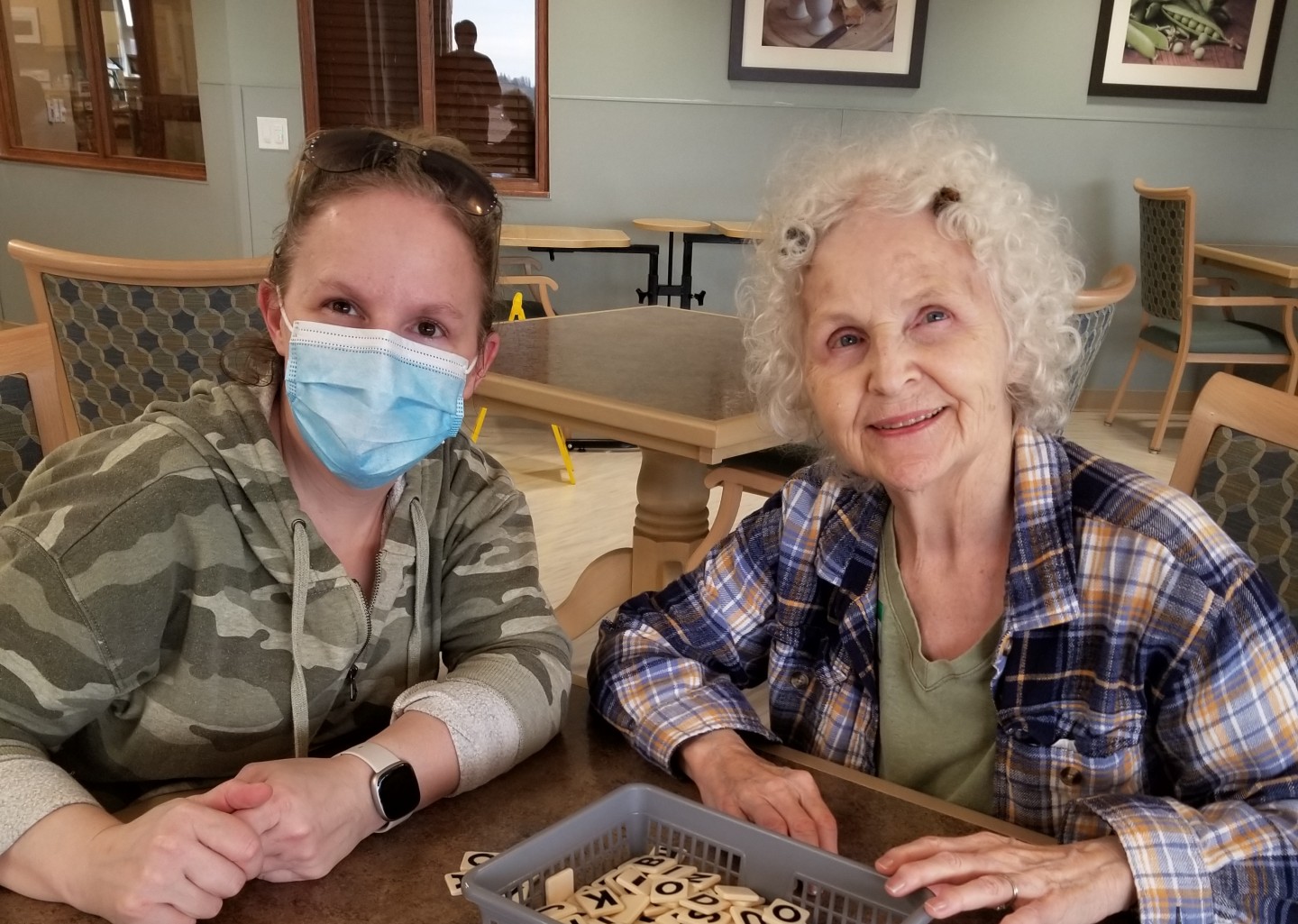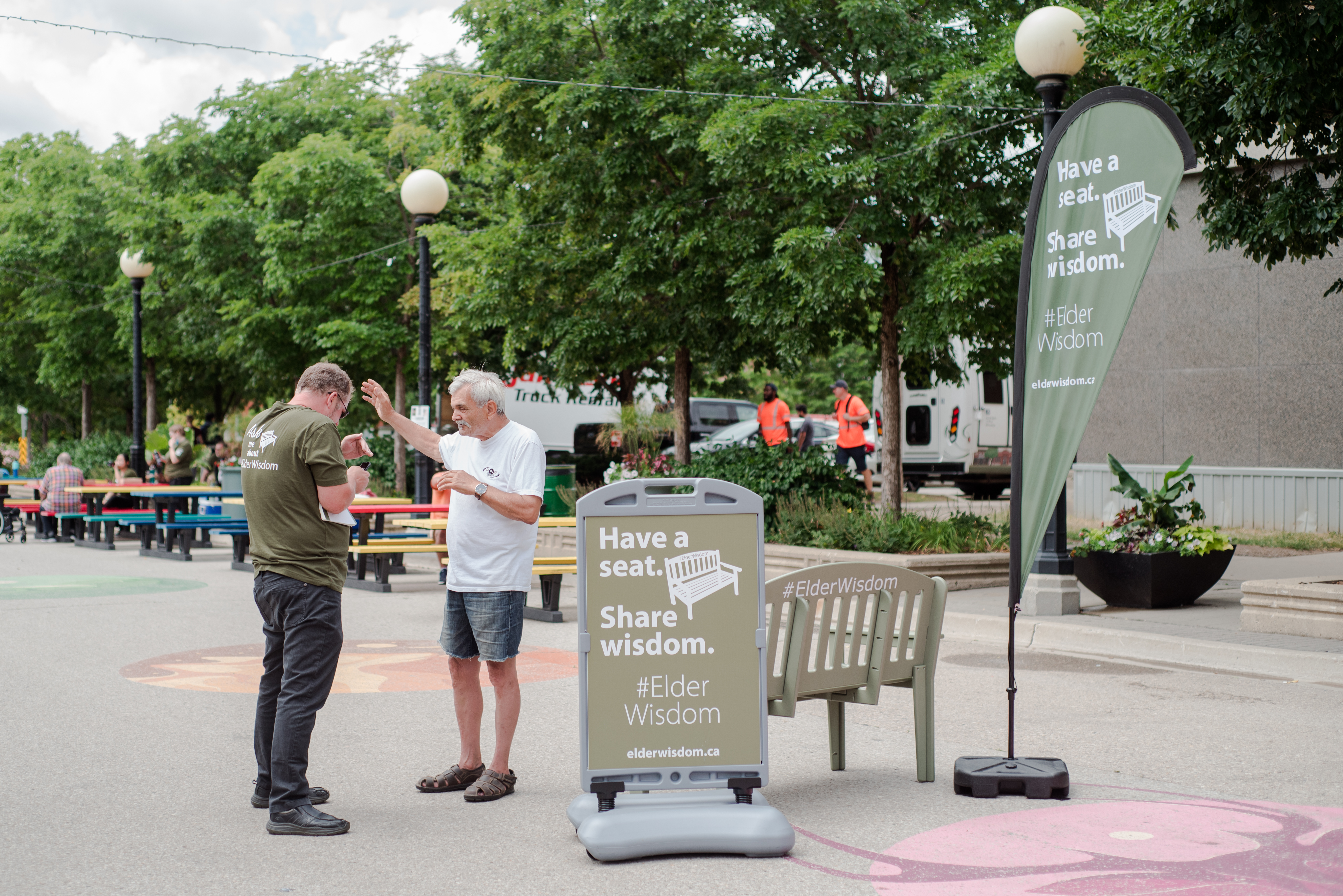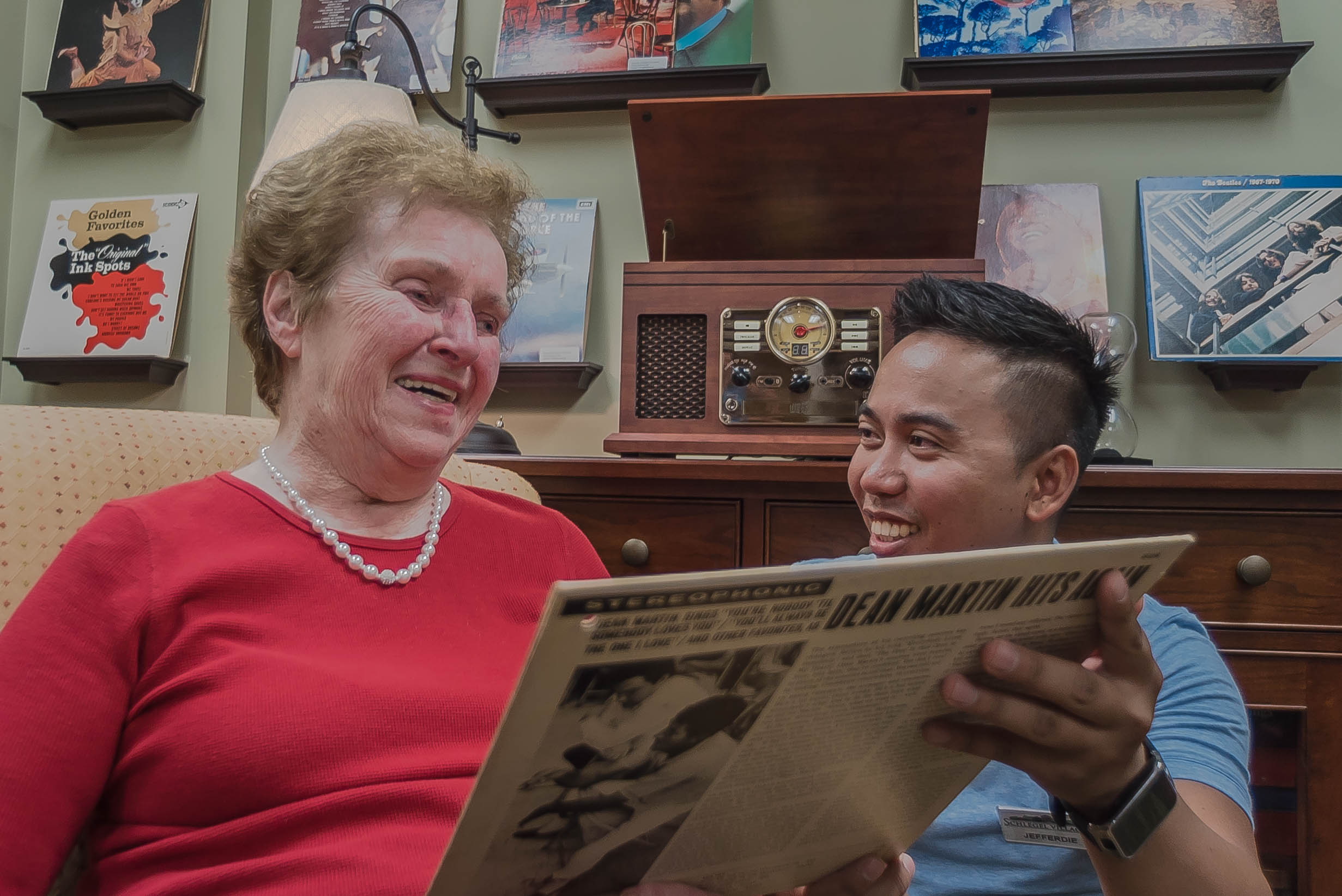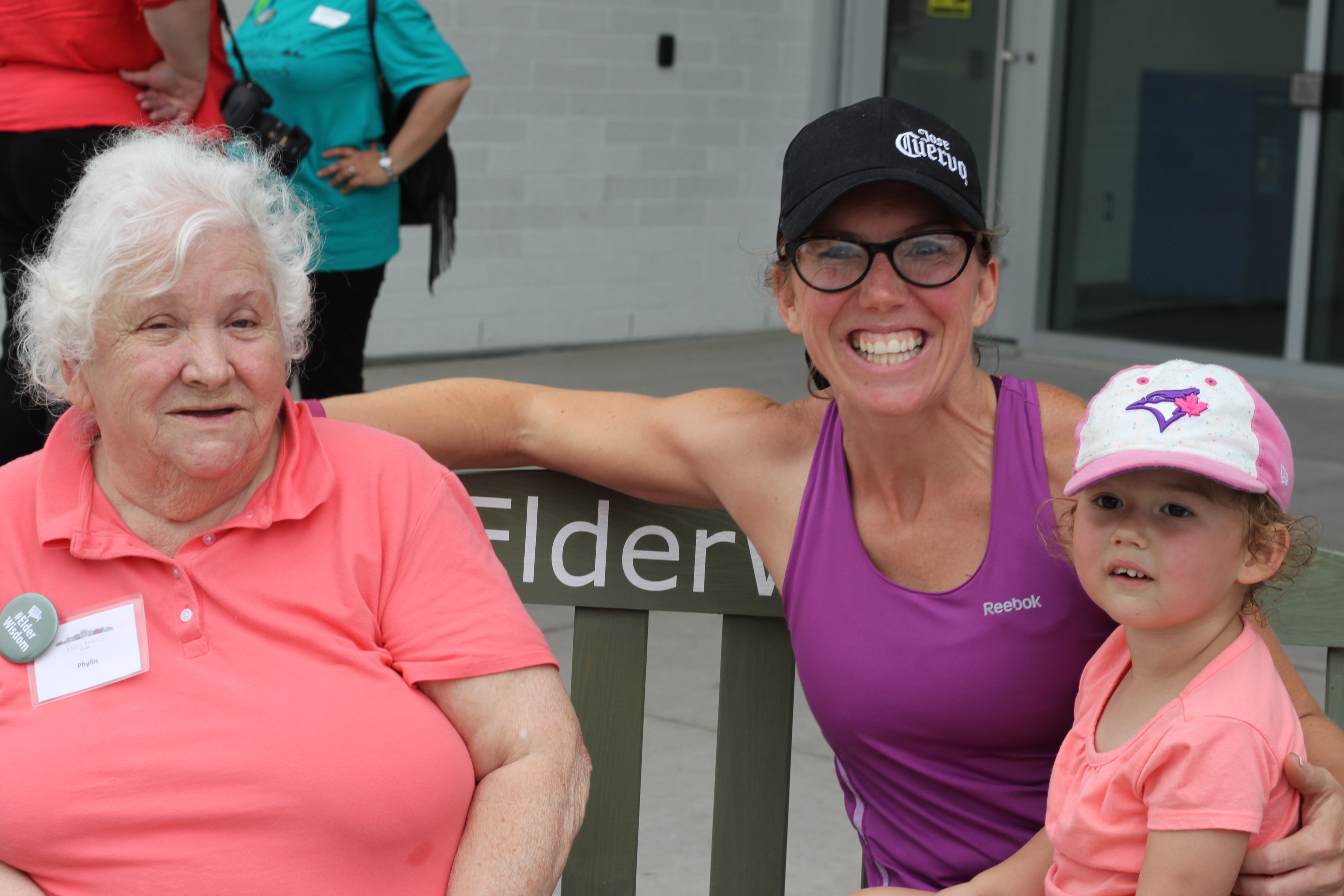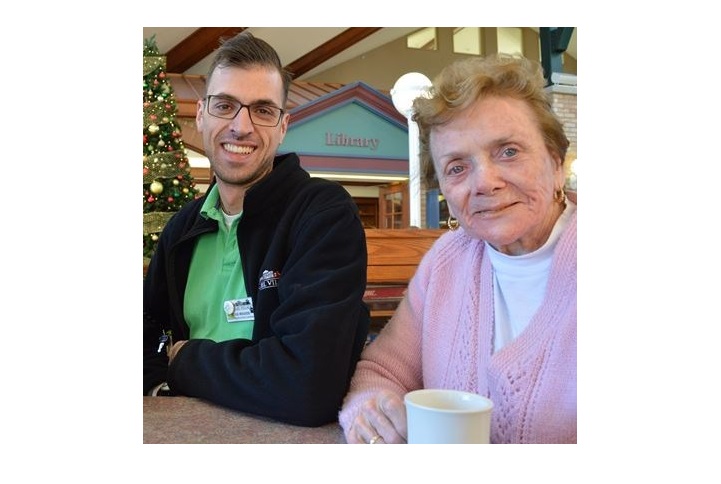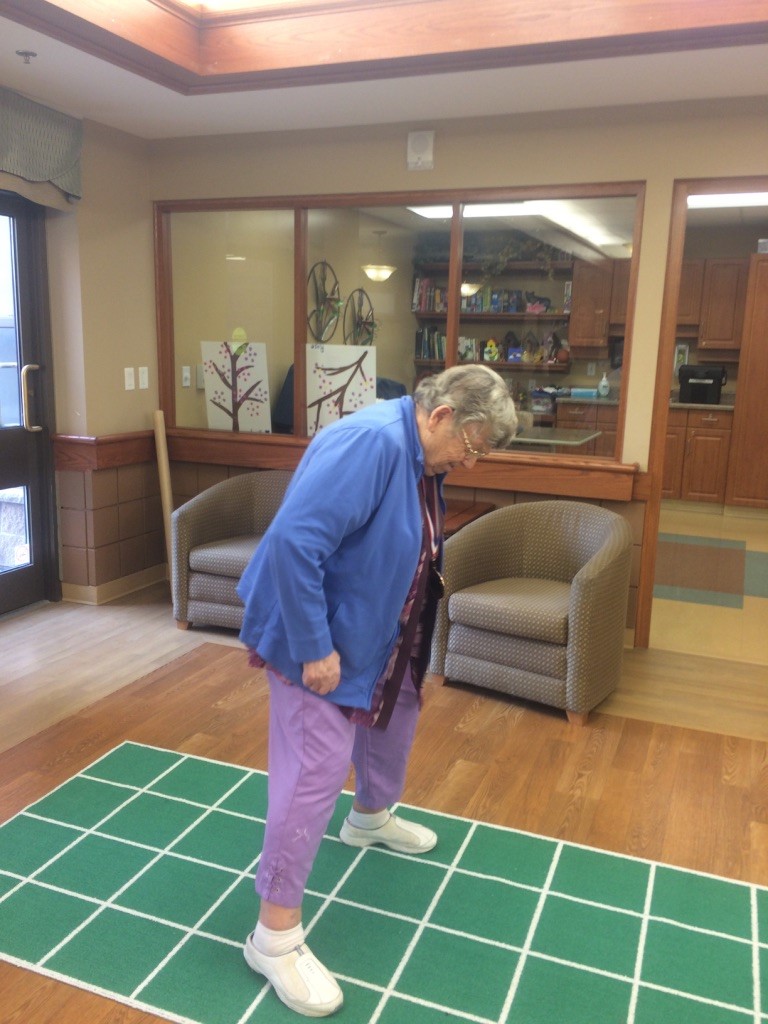Results from the MIND-FUN Research Study:
Mind-motor exercise to improve cognition and functional fitness
From June 2016 to February 2017, Dr. Robert Petrella and his research team at Western University (London, Ontario) conducted a research study with 4 of the Schlegel Villages – Glendale Crossing, Tansley Woods, St. Clair and Winston Park – and we want to share our results!
What did we do: The Schlegel Kinesiologists implemented a Square-stepping exercise (SSE) program for 12-weeks in each of the villages. The research team completed assessments on cognitive function, walking characteristics, balance, as well as mood and behaviours, at the start of the study and 12 weeks later. The Villages of Glendale Crossing and Tansley Woods were randomly assigned to the intervention group and completed the SSE program from July – September 2016. The Villages of St. Clair and Winston Park were randomly allocated to the wait-list control group and completed their assessments before starting the SSE program in November 2016.
1. Is Square-stepping exercise feasible in retirement living and long-term care? – Yes!
Attendance rates
- The Village of Glendale Crossing

- 15 residents enrolled
- Average of 6 residents at each session
- 5 residents attended more than 10 sessions, and they had an average attendance rate of 78%
- The Village of Tansley Woods
- 15 residents enrolled
- Average of 8 residents at each session
- 6 residents attended more than 12 sessions, and they had an average attendance rate of 57%
- The Village of St. Clair
- 17 residents enrolled
- Average of 6 residents at each session
- 7 residents attended more than 12 sessions, and they had an average attendance rate of 73%
- The Village of Winston Park
- 24 Residents enrolled
- Retirement Living
- Average of 10 residents at each session
- 10 residents attended more than 12 sessions, and they had an average attendance rate of 88%
- Long-term Care
- Average of 4 residents at each session
- 3 residents attended more than 12 sessions, and they had an average attendance rate of 78%
Program Changes and Recommendations
- Decrease duration from 60 minutes to 45 minutes
- Repeat stepping patterns 2x instead of 4x to maintain engagement
- Residents with higher cognitive function acted as peer coaches for residents with lower cognitive function
- Kinesiologists supported mobility impaired residents to reduce balance issues with walker use
- Volunteers should be recruited to assist with program implementation
2. Does square-stepping exercise improve mood and behaviours in residents with dementia?
Yes!The Kinesiologists completed a questionnaire on the mood and behaviours of residents with dementia, called the Neuropsychiatric Inventory questionnaire. The Square-stepping exercise group significantly improved mood and behaviours after 12-weeks of SSE compared to the control group; specifically, SSE improved delusions, depression and disinhibition.
3. Does square-stepping exercise improve cognition, walking characteristics or balance?
Cognition was measured through a set of 8 online computer games, called Cambridge Brain Sciences – see Table 1 for average scores at each Village.
Walking Characteristics were measured using a sensored walkway – called a GaitRITE mat – that measures: walking speed, step length and step variability.
Balance was measured using the Short Performance Physical Battery, where participants had to stand with their feet: side-by-side, semi-tandem and tandem for 10 seconds.
Unfortunately, we did not find differences between groups in any of the above outcomes.We expect that the amount of variability in cognitive and mobility impairments between residents, combined with small sample sizes did not allow us to see differences.Furthermore, we expect that it may take a longer duration of time to see changes in cognition (i.e., 6 months or more).Lastly, we experienced a ceiling effect on the balance test where too many participants began the study with the highest possible score and therefore we could not see improvements, despite residents reporting that they felt their balance had improved.
Winston Park – Eye-Tracking Sub Study
As a sub study, we completed prosaccade and antisaccade tasks (looking toward and away from a target on a computer screen) and measured reaction time. An antisaccade task is a cognitive challenging task that is a measure of higher cognitive function, called executive control; this test is also very sensitive to change over time. Over a 6-month period (August 2016 to February 2017) we did not see any changes in reaction time within the SSE group (i.e., no cognitive decline). This is the first time that this type of measurement has been done in older adults with an average age of 85 and some evidence of cognitive decline.
Table 1: Average scores and standard deviations of Cambridge Brain Sciences computer games at baseline and normative population values for adults aged 75-90 from www.cambridgebrainsciences.com. N is the number of participants that completed the game.
|
Game (Cognitive domain) |
Glendale Crossing (n=4) |
Tansley Woods (n=10) |
St. Clair |
Winston Park |
Population Norms |
|
Monkey Ladder (Memory) |
4.3 (1.7) |
5.3 (1.3) |
3.9 (1.1) (n=7) |
4.8 (1.1) (n=15) |
6.1 (1.7) (n=243) |
|
Digit Span (Memory) |
3.3 (2.2) |
4.9 (0.9) |
3.1 (1.9) (n=7) |
4.3 (1.6) (n=15) |
6.5 (1.7) (n=246) |
|
Hampshire Tree Task (Planning) |
5.8 (5.2) |
9.9 (5.7) |
8.4 (2.2) (n=5) |
8.9 (5.7) (n=15) |
13.8 (9.7) (n=215) |
|
Double Trouble (Reasoning) |
3.5 (1.9) |
4.2 (8.8) |
3.5 (4.6) (n=2) |
4.7 (6.9) (n=15) |
15.5 (14.8) (n=249) |
|
Polygons Task (Concentration) |
15.3 (12.5) |
16.2 (19.7) |
9.0 (15.6) (=2) |
11.99 (13.9) (n=15) |
30.6 (21.6) (n=248) |
|
Token Search (Planning) |
4.8 (1.0)
|
4.7 (0.9) |
3.0 (1.4) (n=2) |
4.8 (1.6) (n=13) |
5.8 (2.2) (n=241) |
|
Odd one out (Reasoning) |
7.3 (2.7) |
6.7 (4.8) |
3.5 (10.6) (n=2) |
7.9 (3.0) (n=13) |
8.9 (4.2) (n=243) |
|
Rotations task (Concentration) |
32.0 (47.9) |
44.3 (29.3) |
16.0 (2.8) (n=2) |
41.3 (39.6) (n=13) |
62.2 (32.8) (n=246) |
Future Directions
There is great enthusiasm from the Schlegel – University of Waterloo Research Institute for Aging and Ron Schlegel regarding interest in continuing the SSE program within the Schlegel Villages. We are looking forward to continuing our partnership and the continued implementation of this program!
This study will be a part of my PhD thesis work and we hope to publish it in a peer-reviewed scientific journal, without any identifying information. If any participants have questions about the results of this study, please contact Erin Shellington, preferably by email.
We would like to thank the following individuals for their support and participation: the residents who participated, Amy Harbin, Courtney Aubin, Hillary Wood, Janelle Way, Kristin Frye, Angel Renaud, Tonya Bowles, Raymond Bolton, Emma Bender, Pamela Helmes-Hayes, Brendan Wickham, Carrington Powe, Jamie Killingbeck, Kaylen Pfisterer, and Susan Brown.
Thank you very much!
Erin Shellington
PhD Candidate
School of Kinesiology
Faculty of Health Sciences
University of Western Ontario
- Previous
- View All News
- Next

